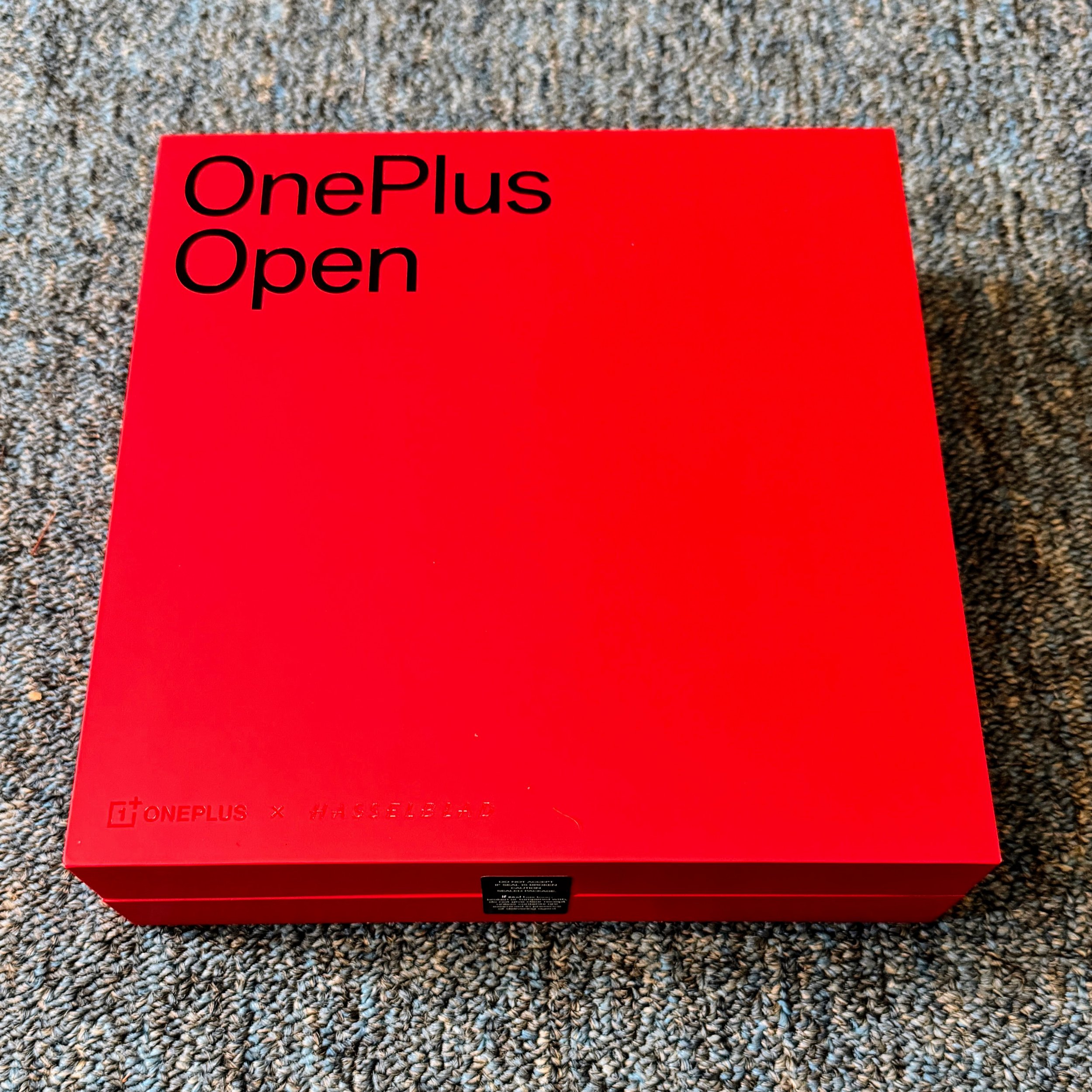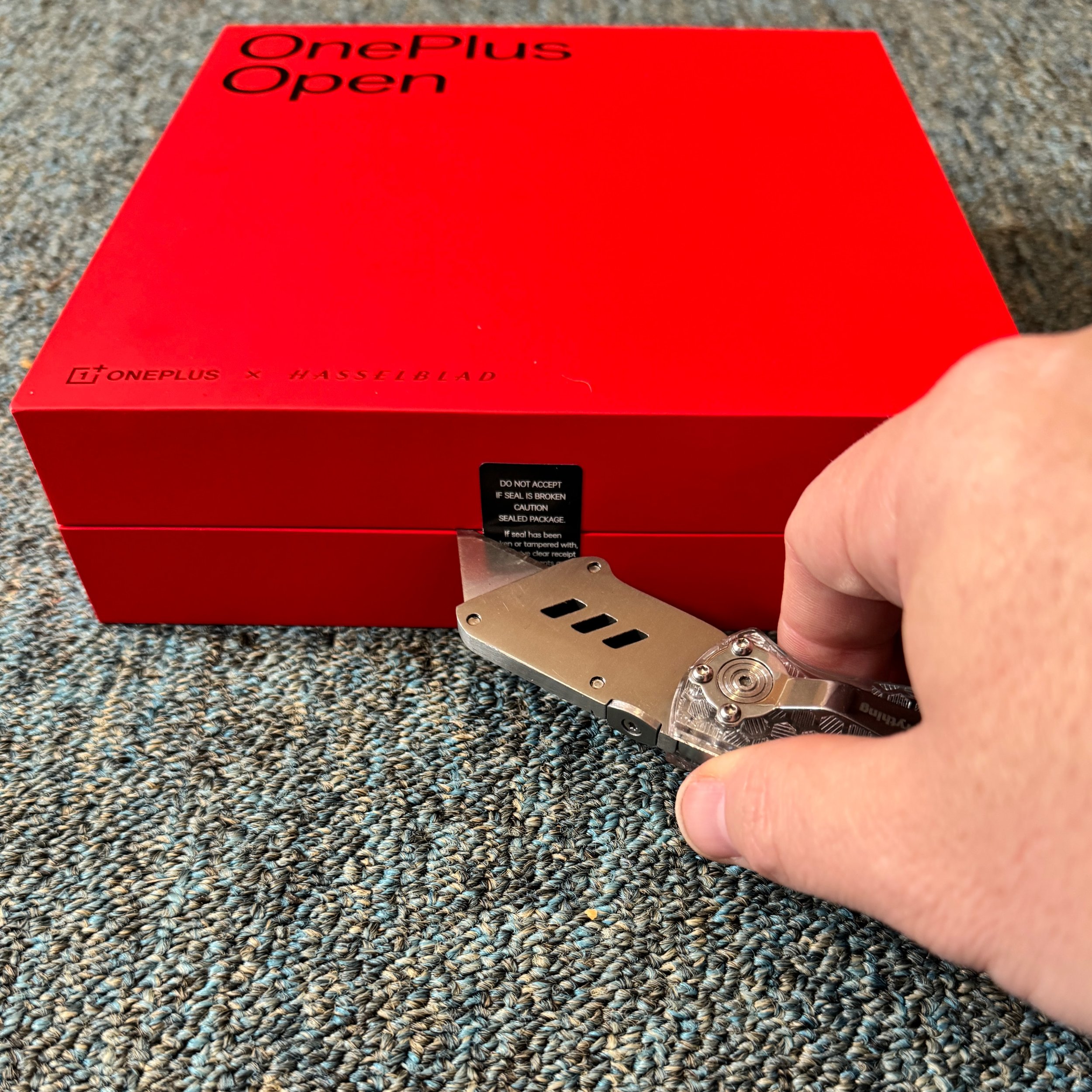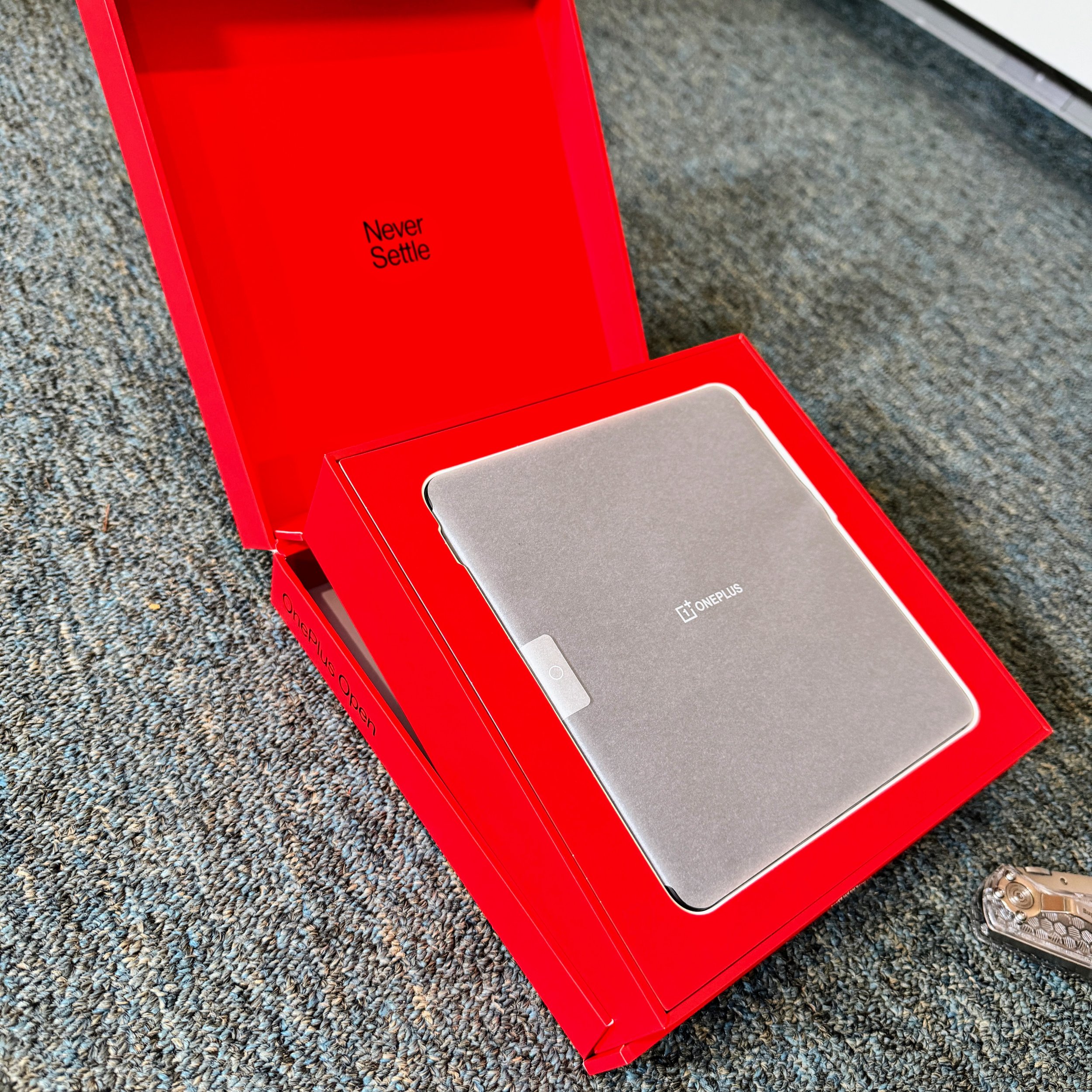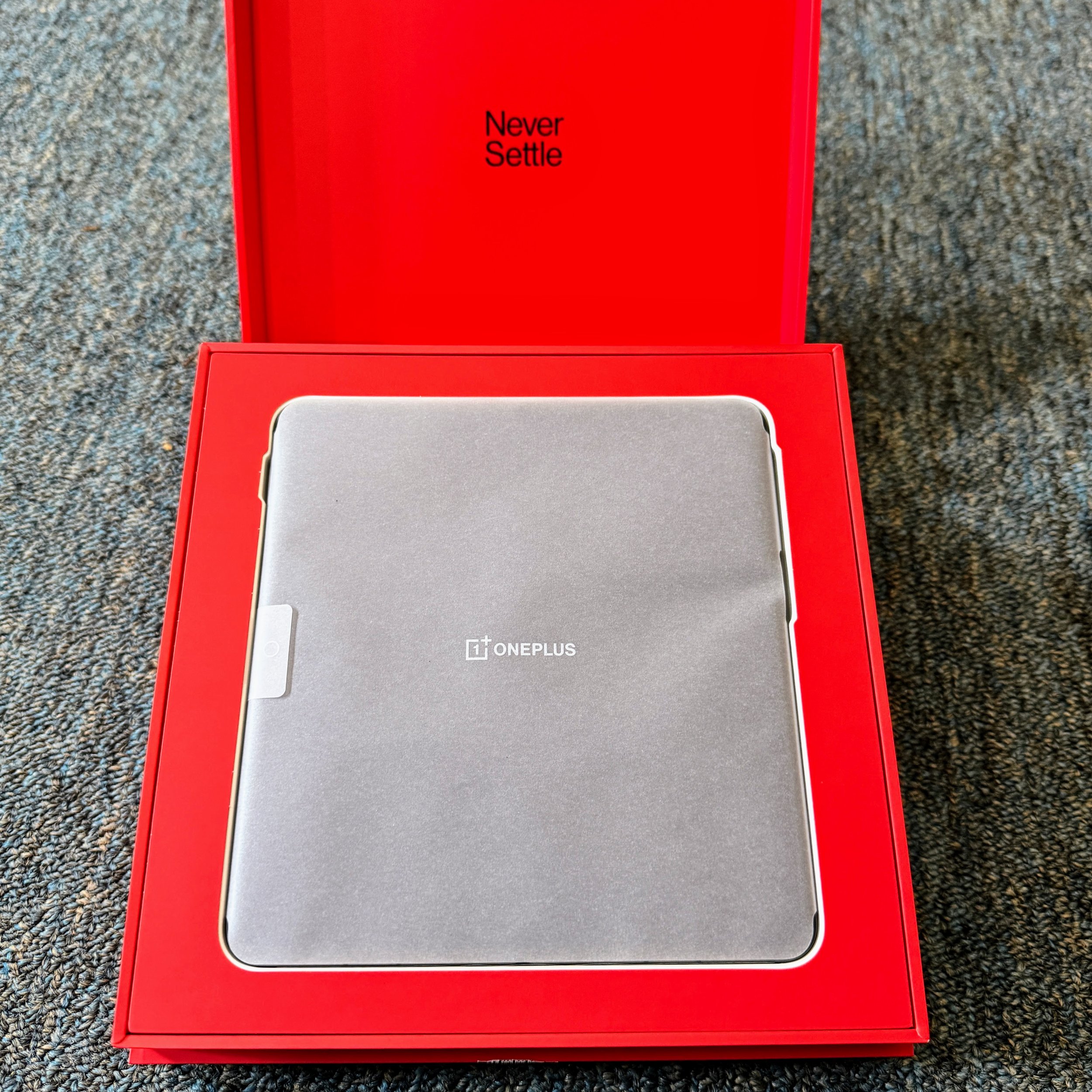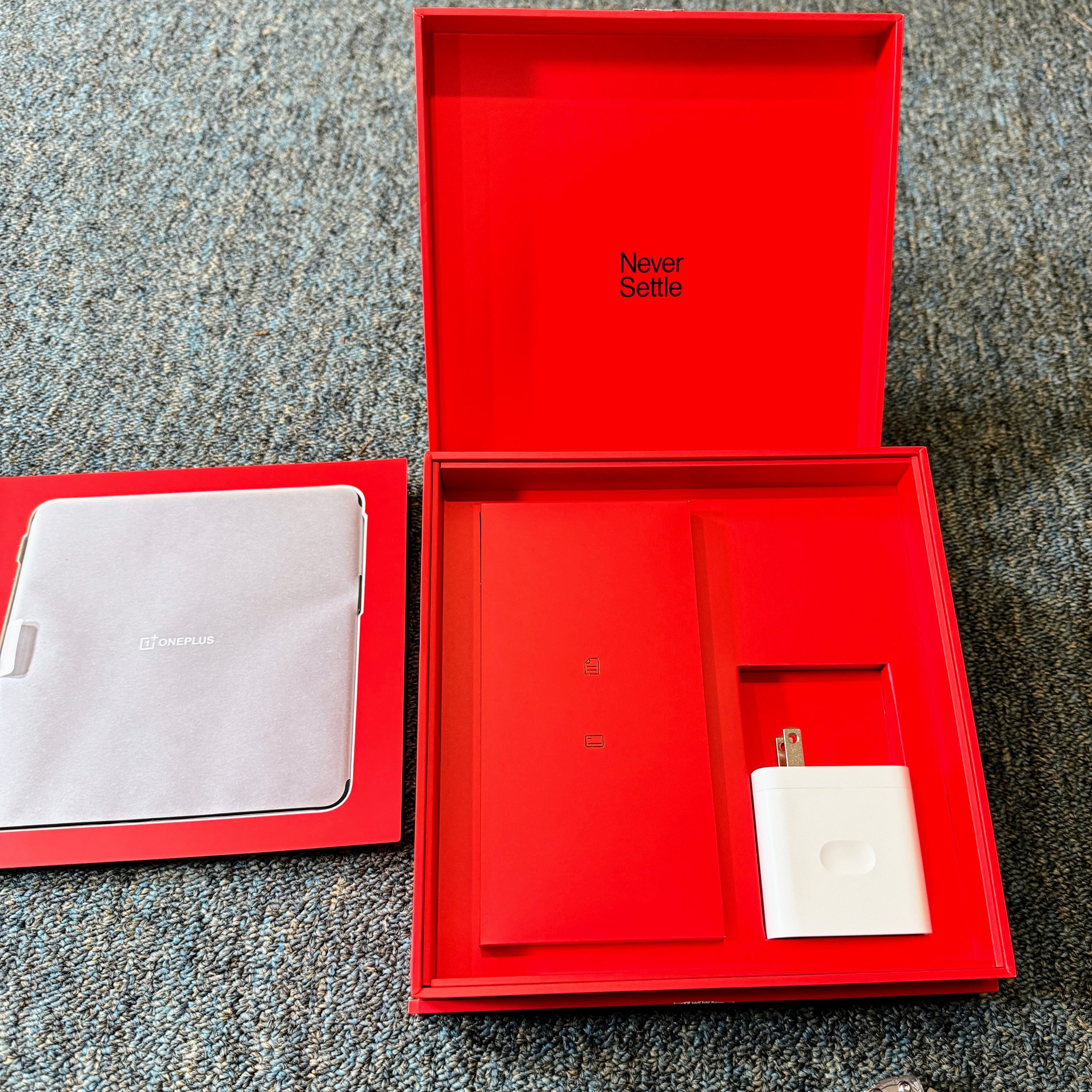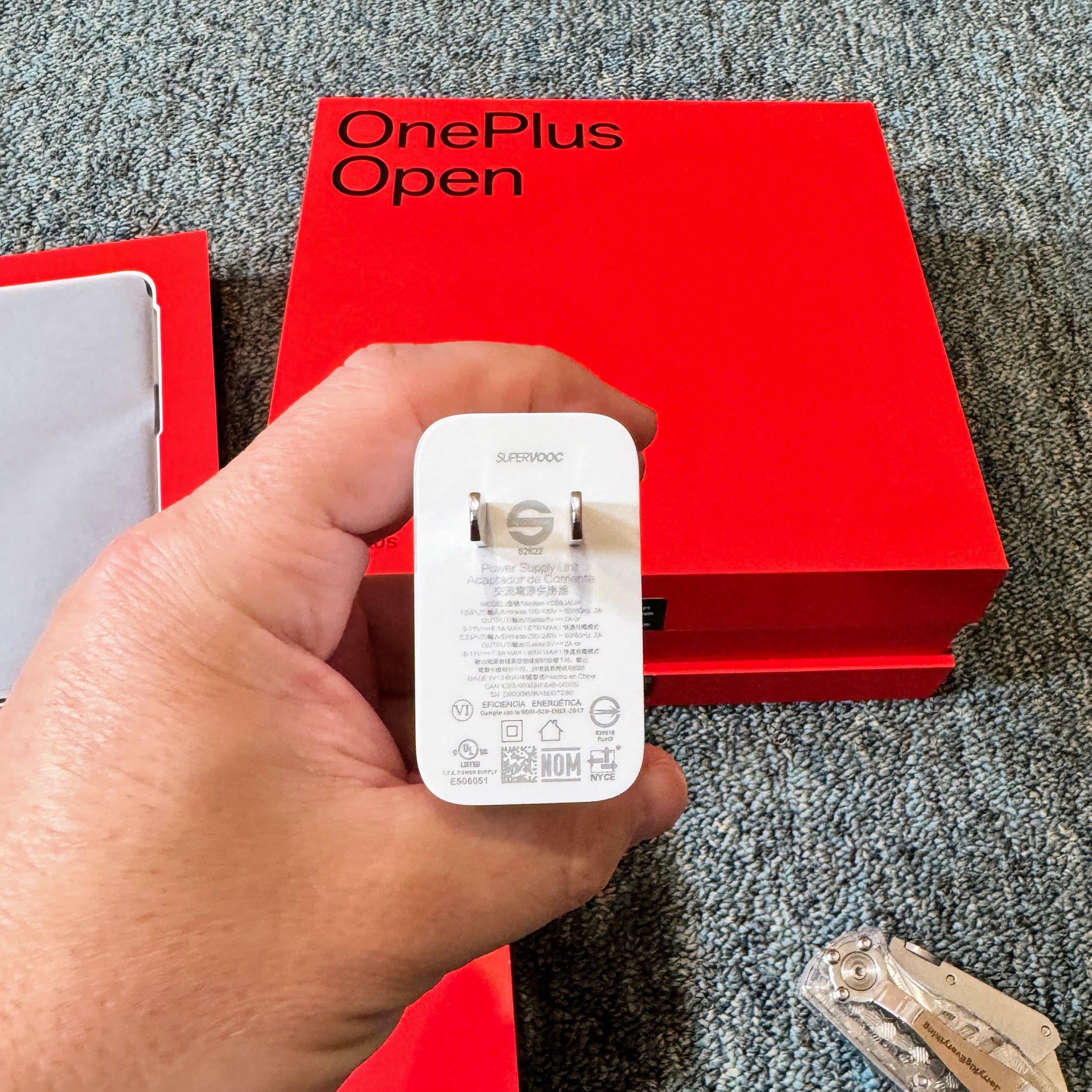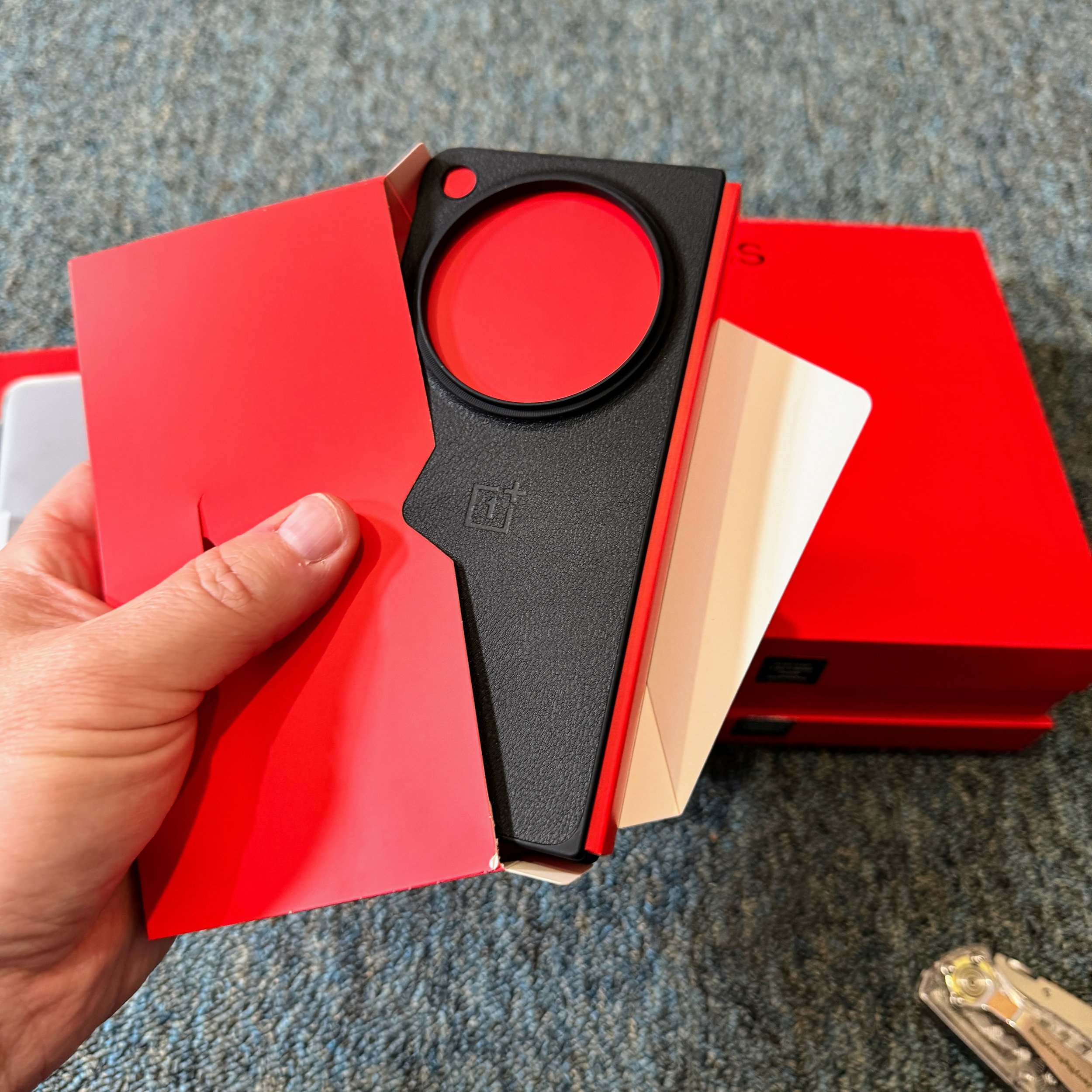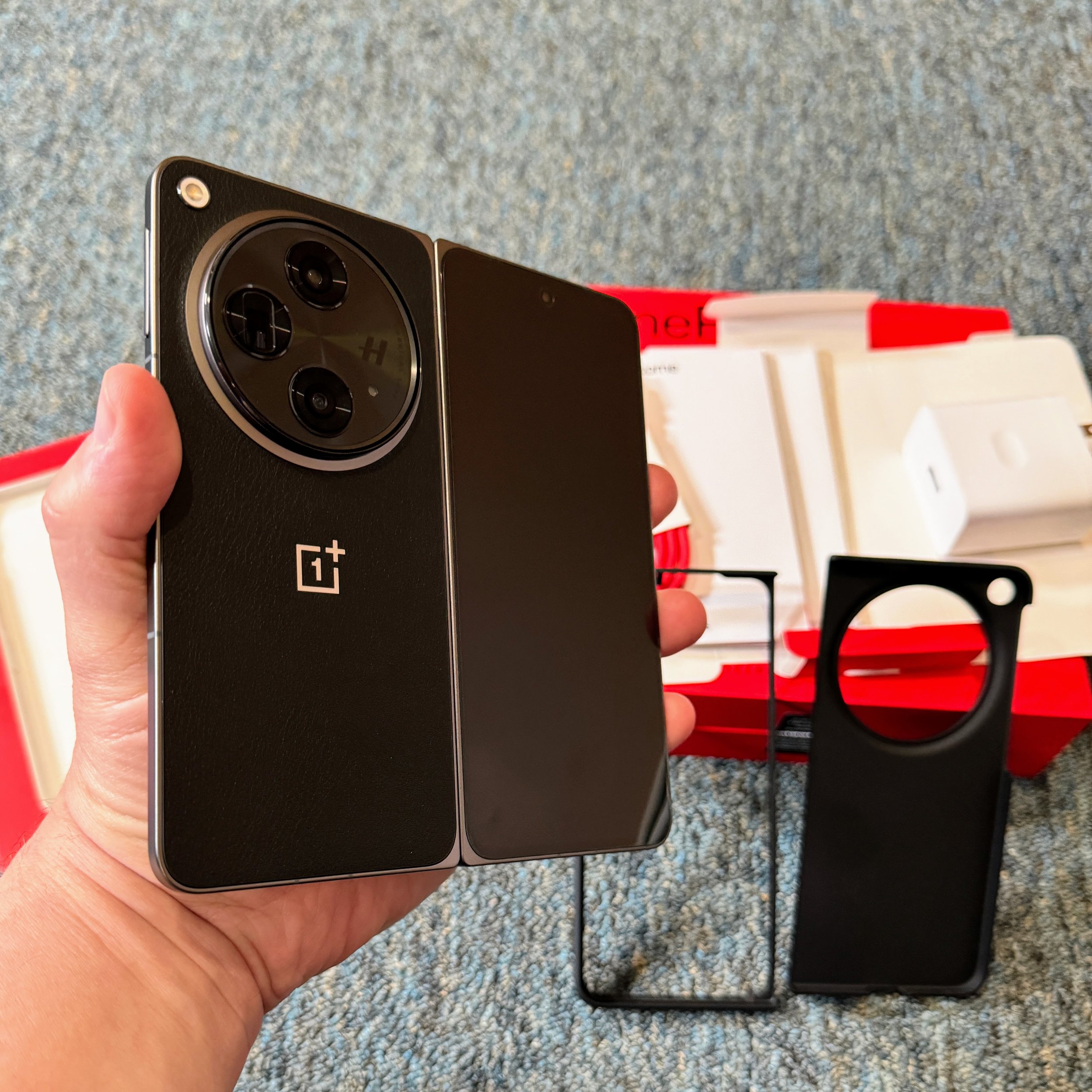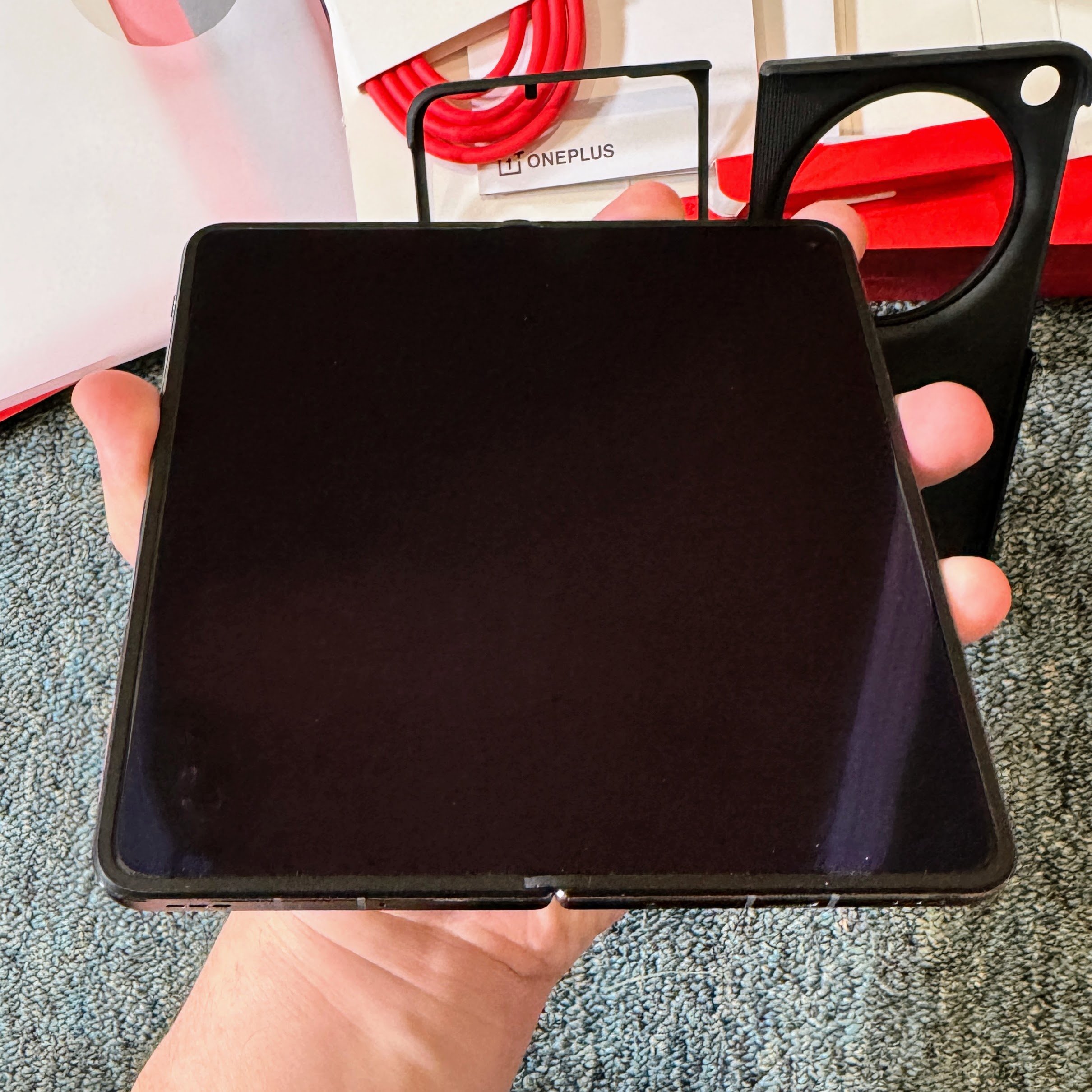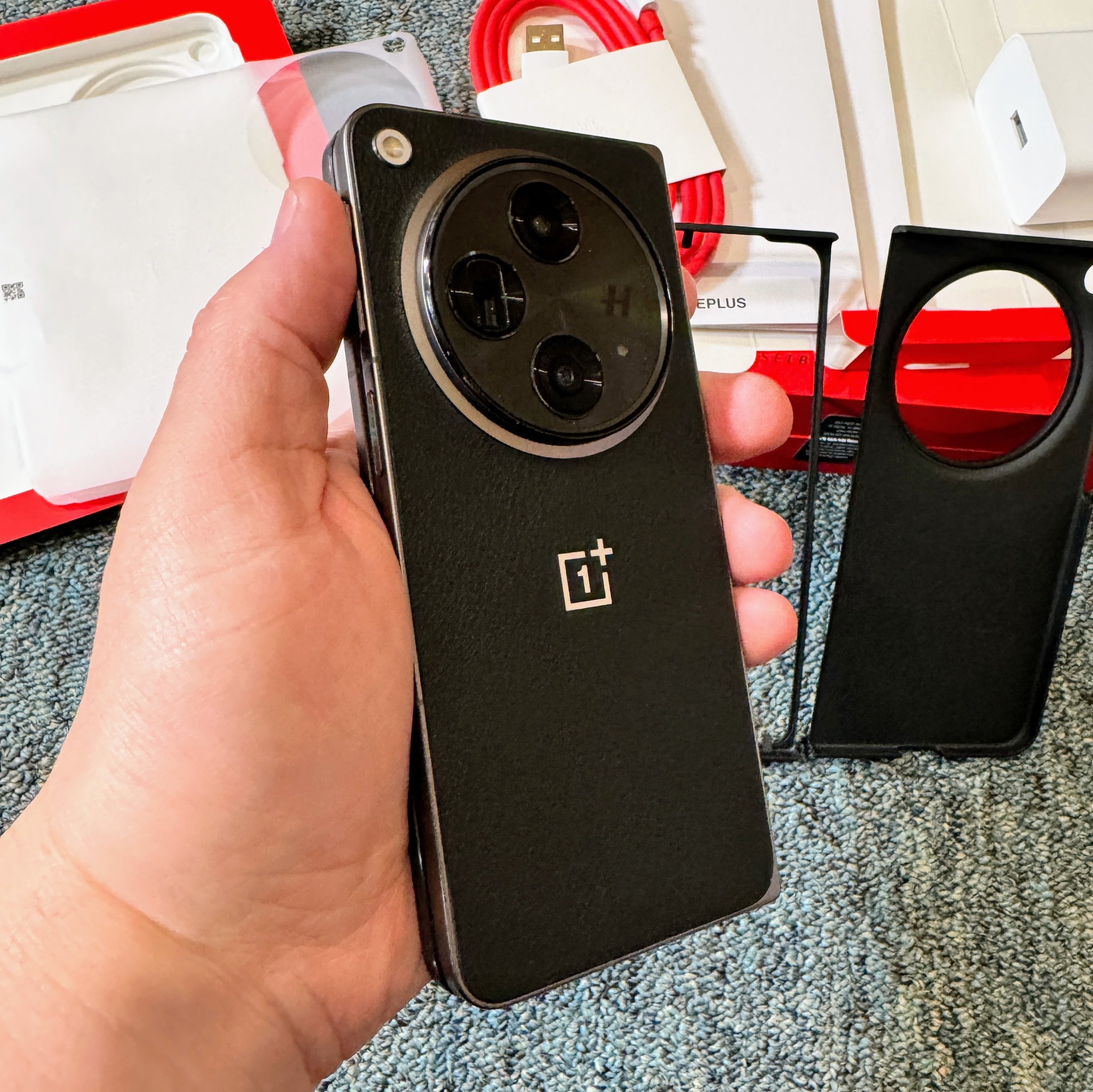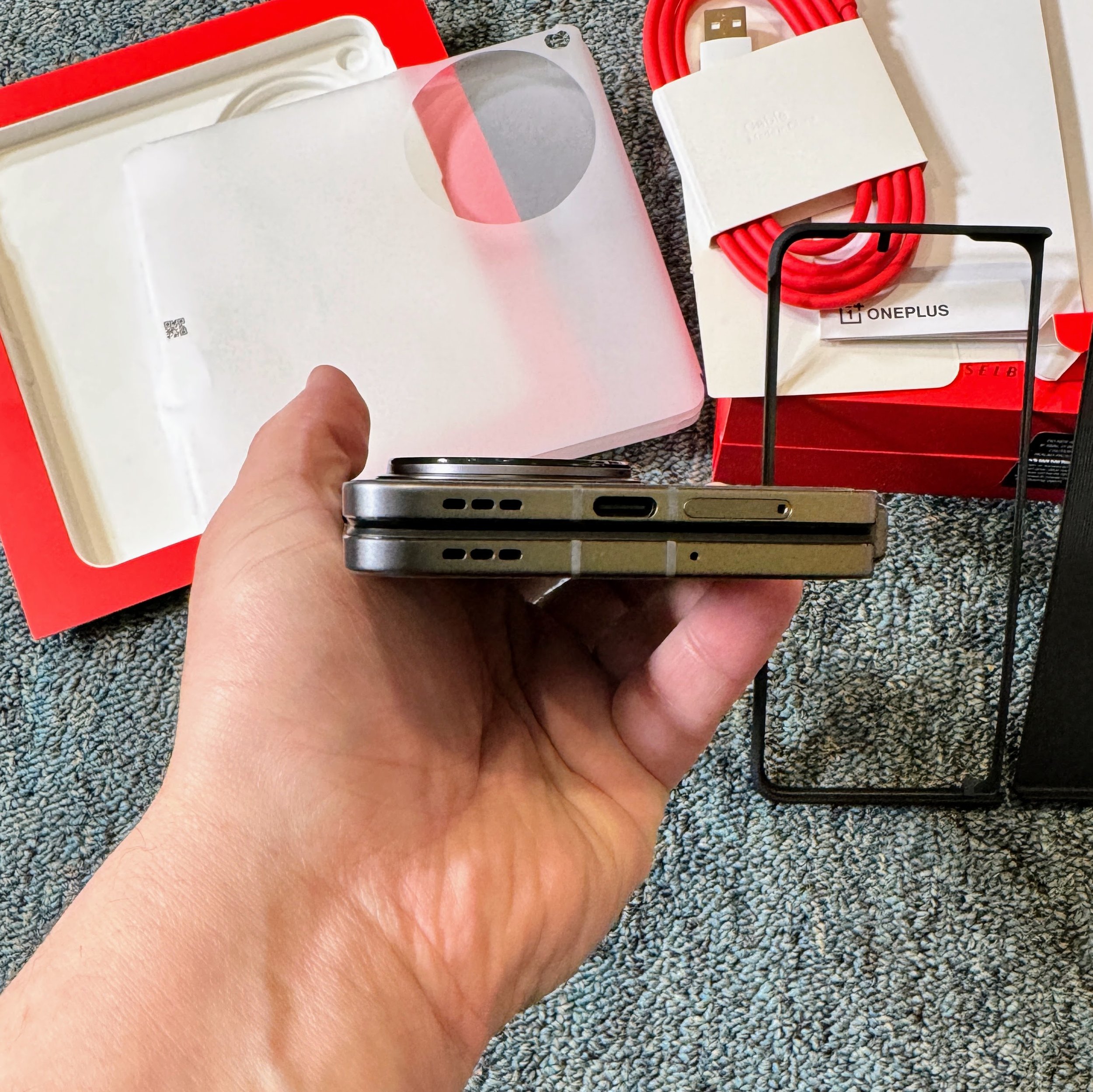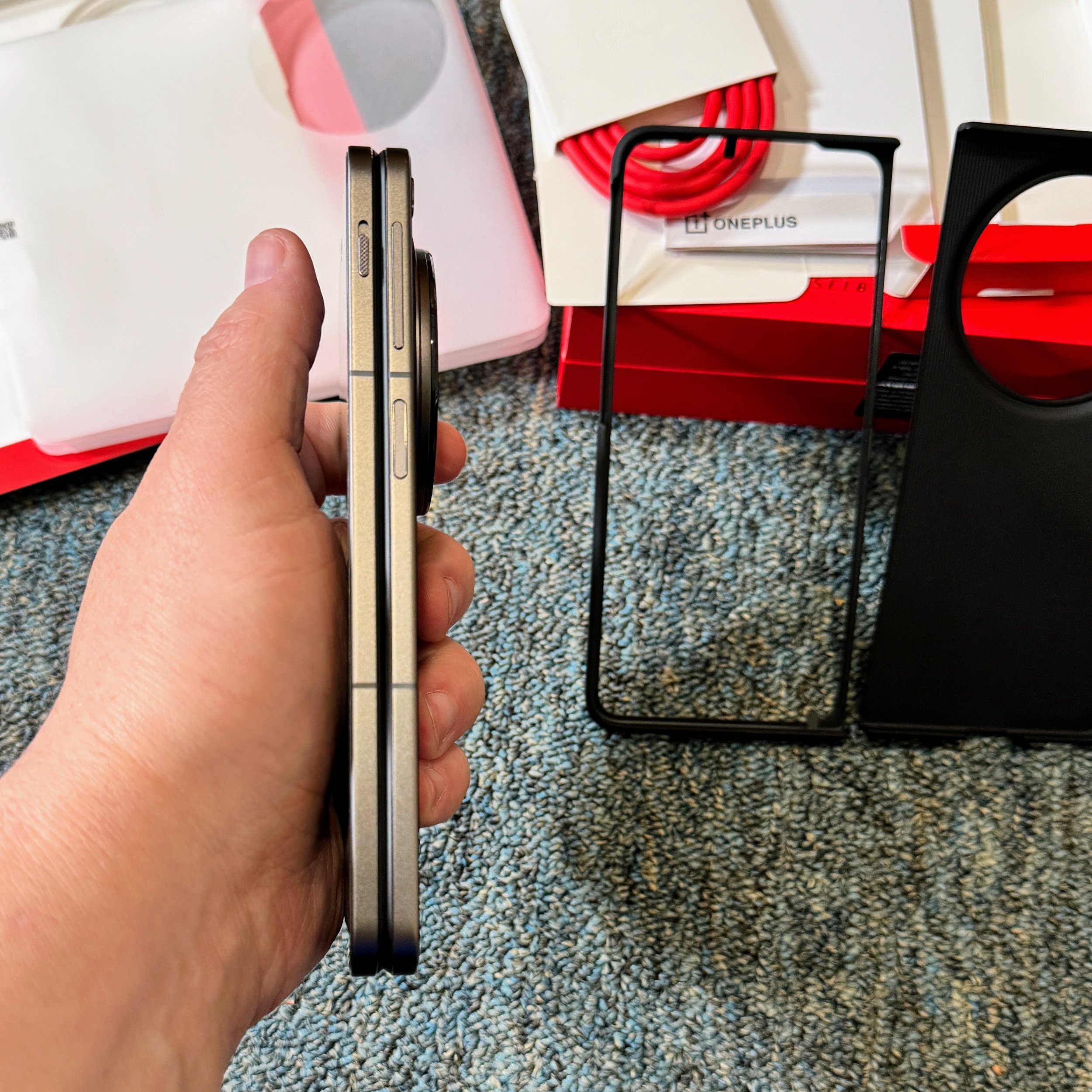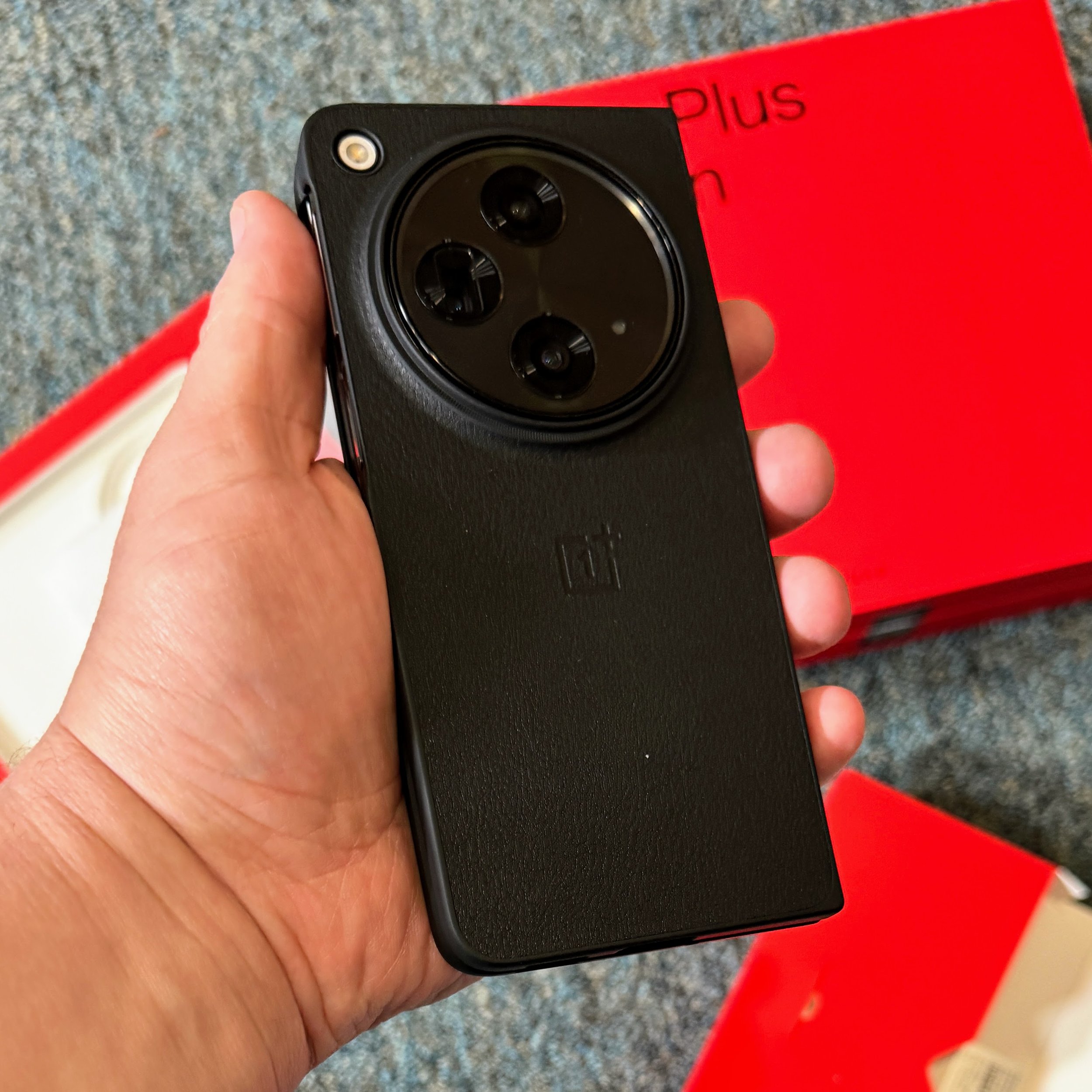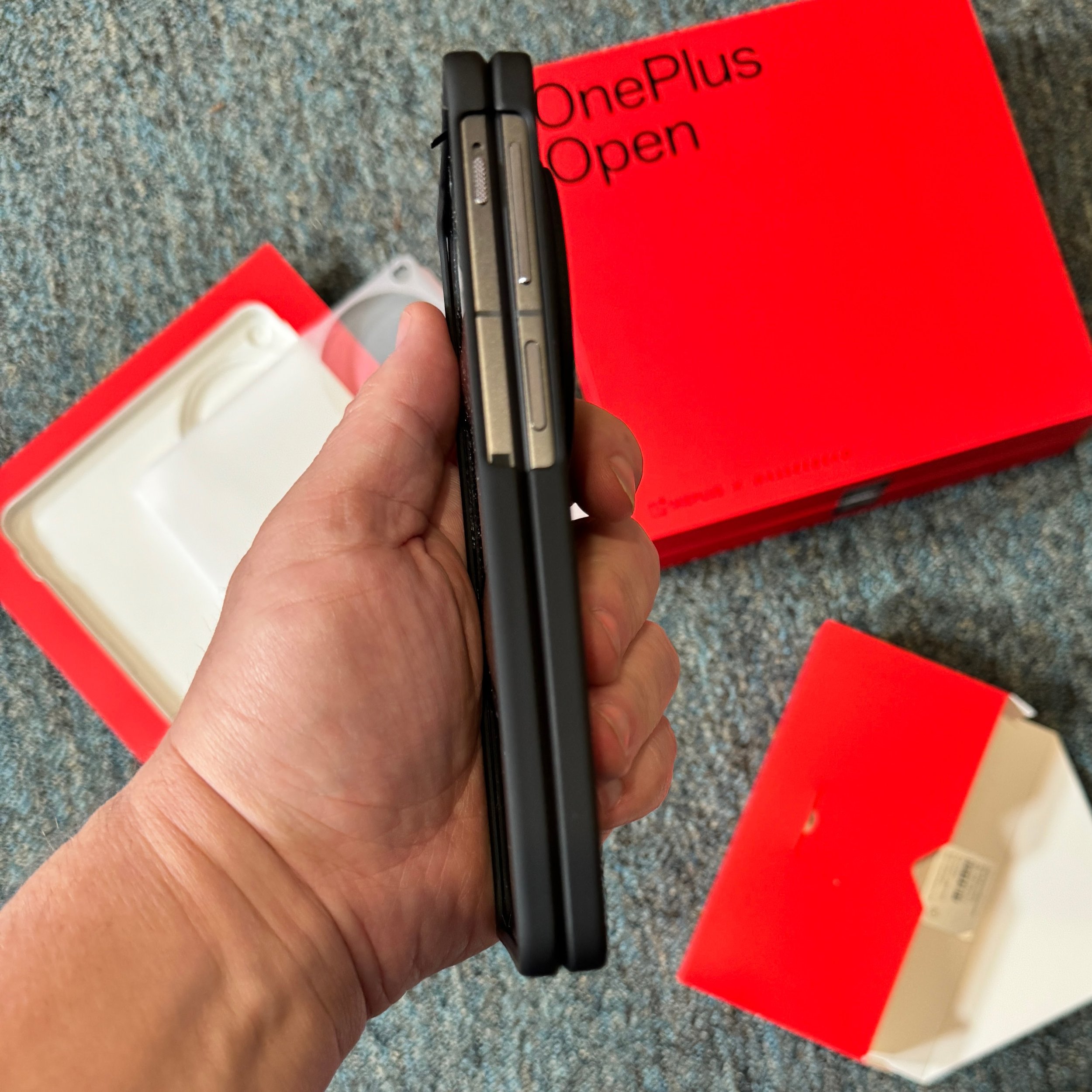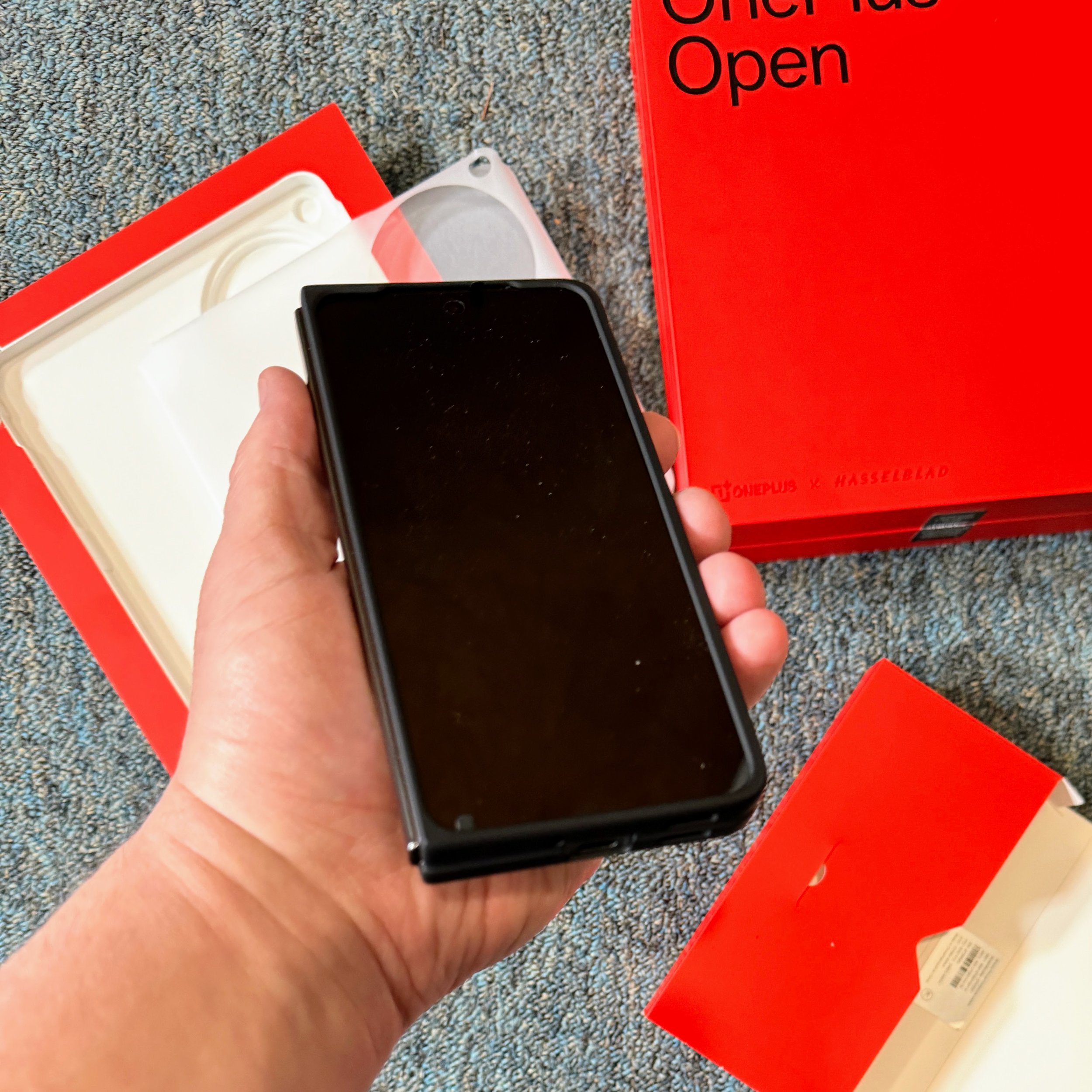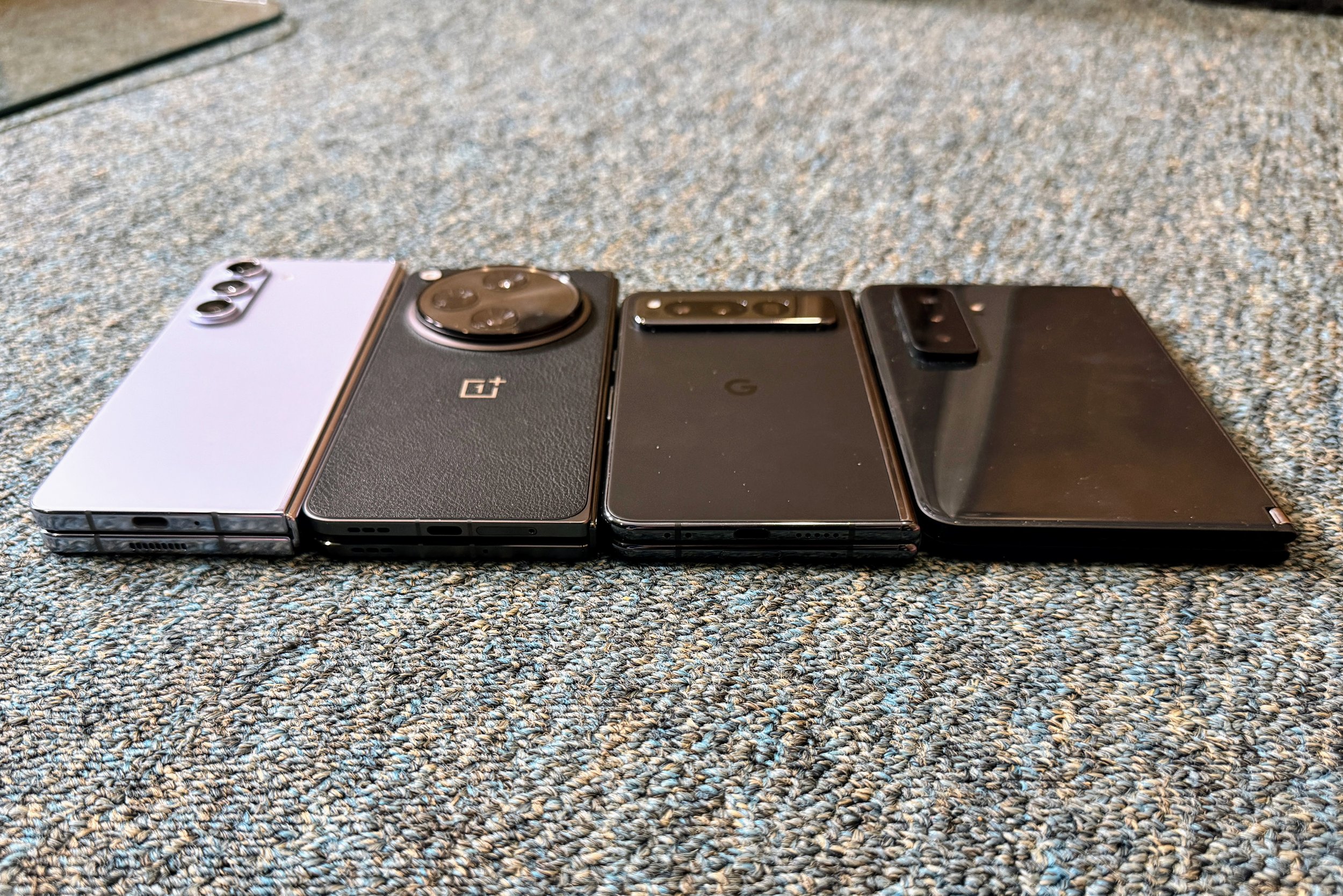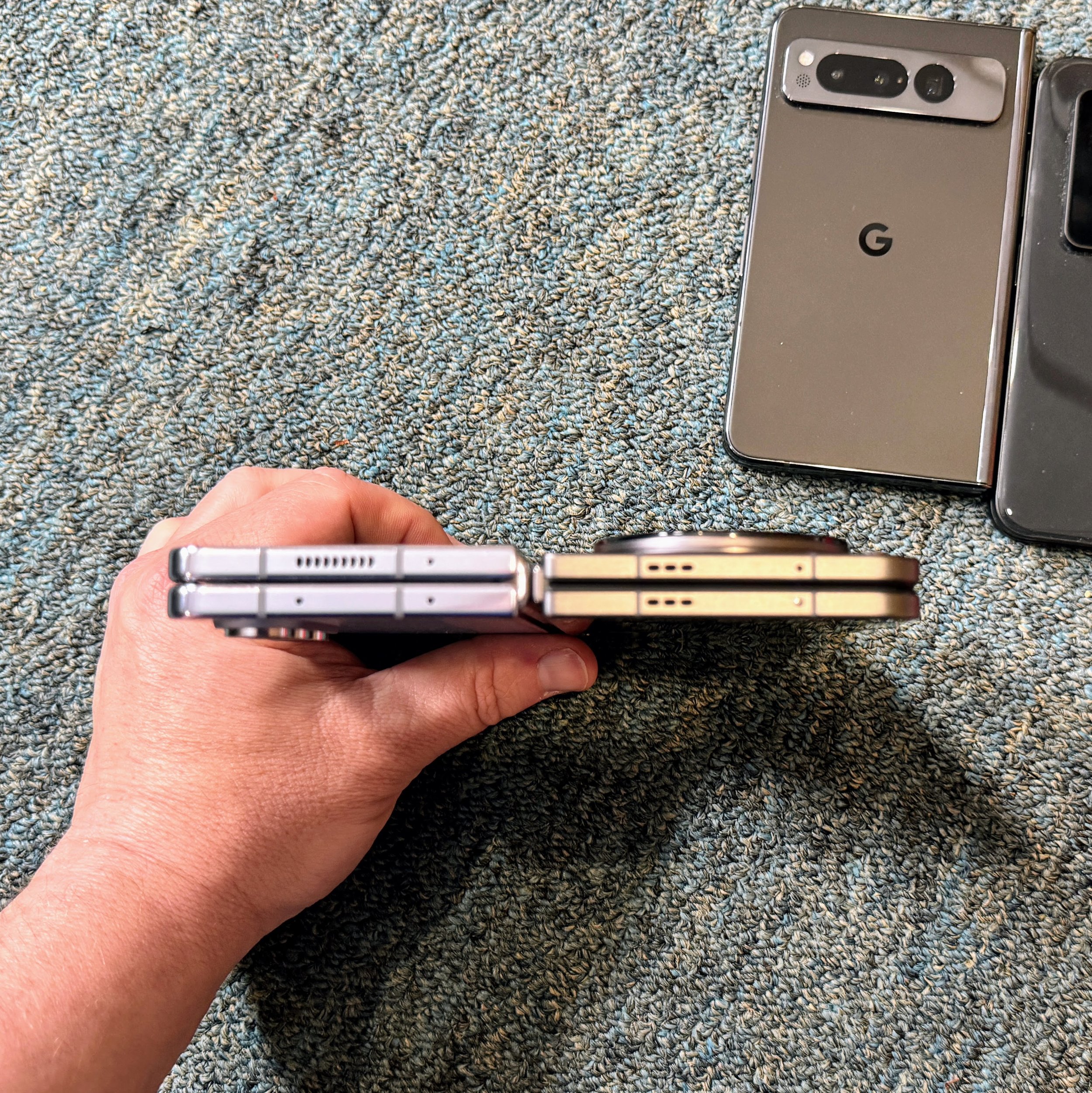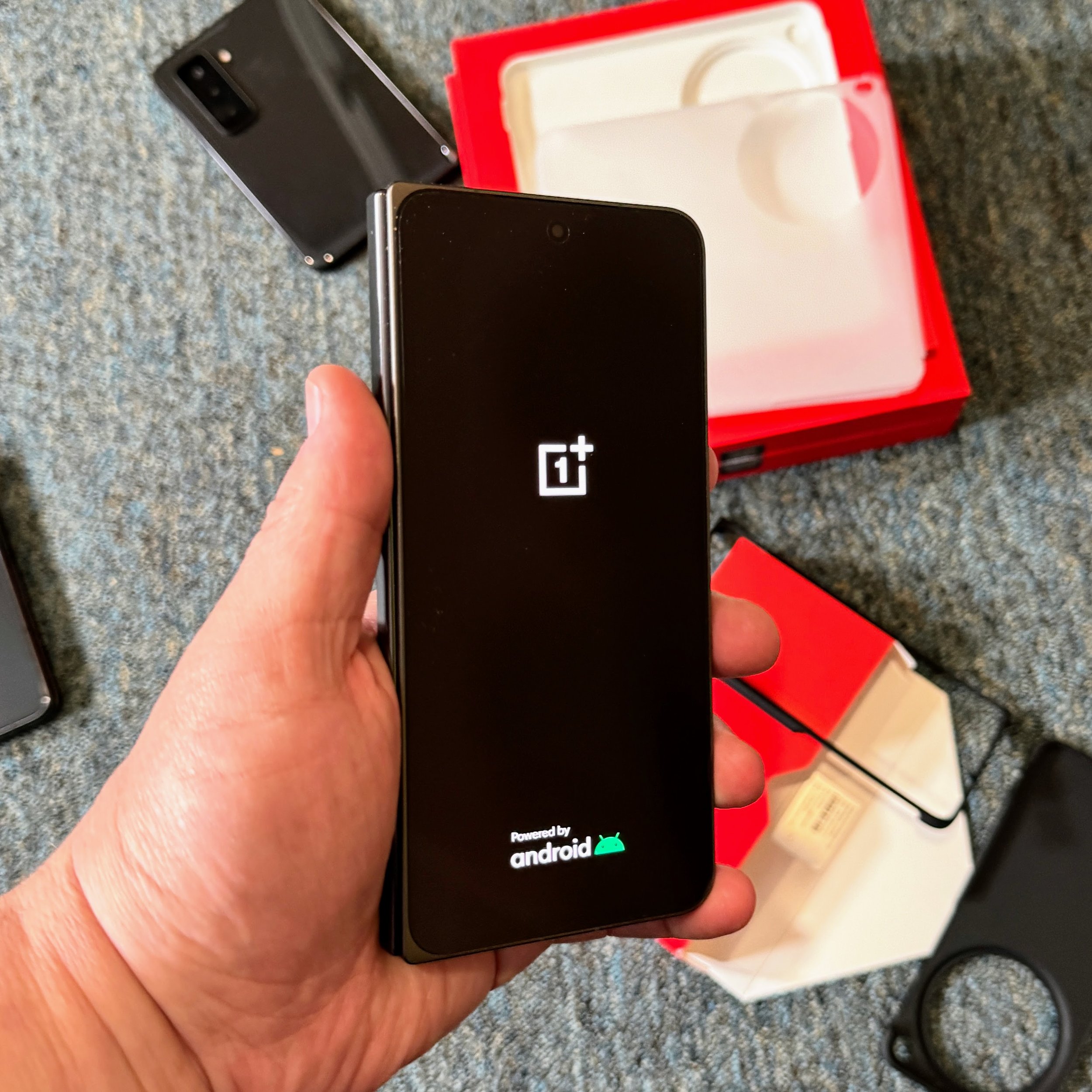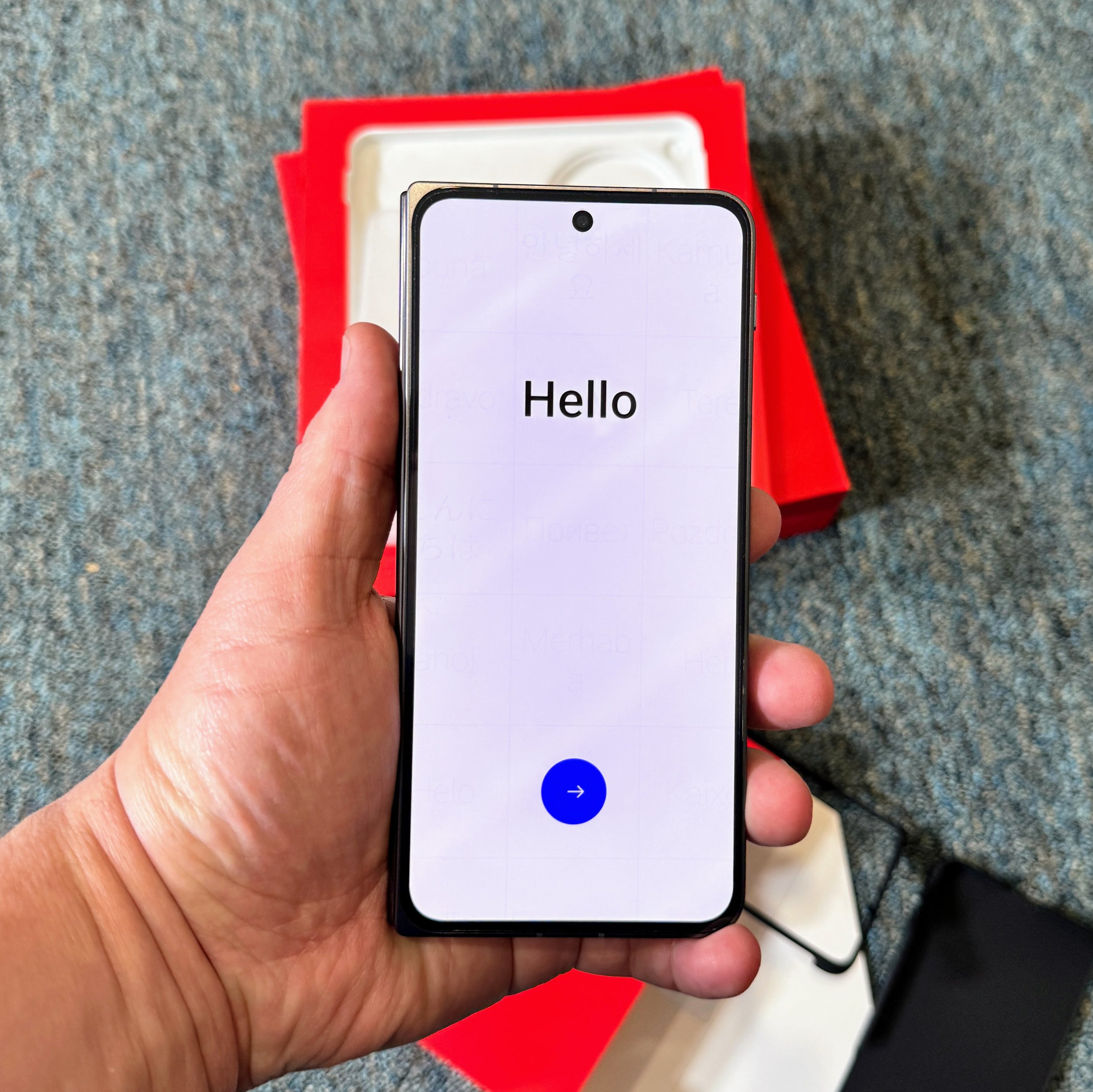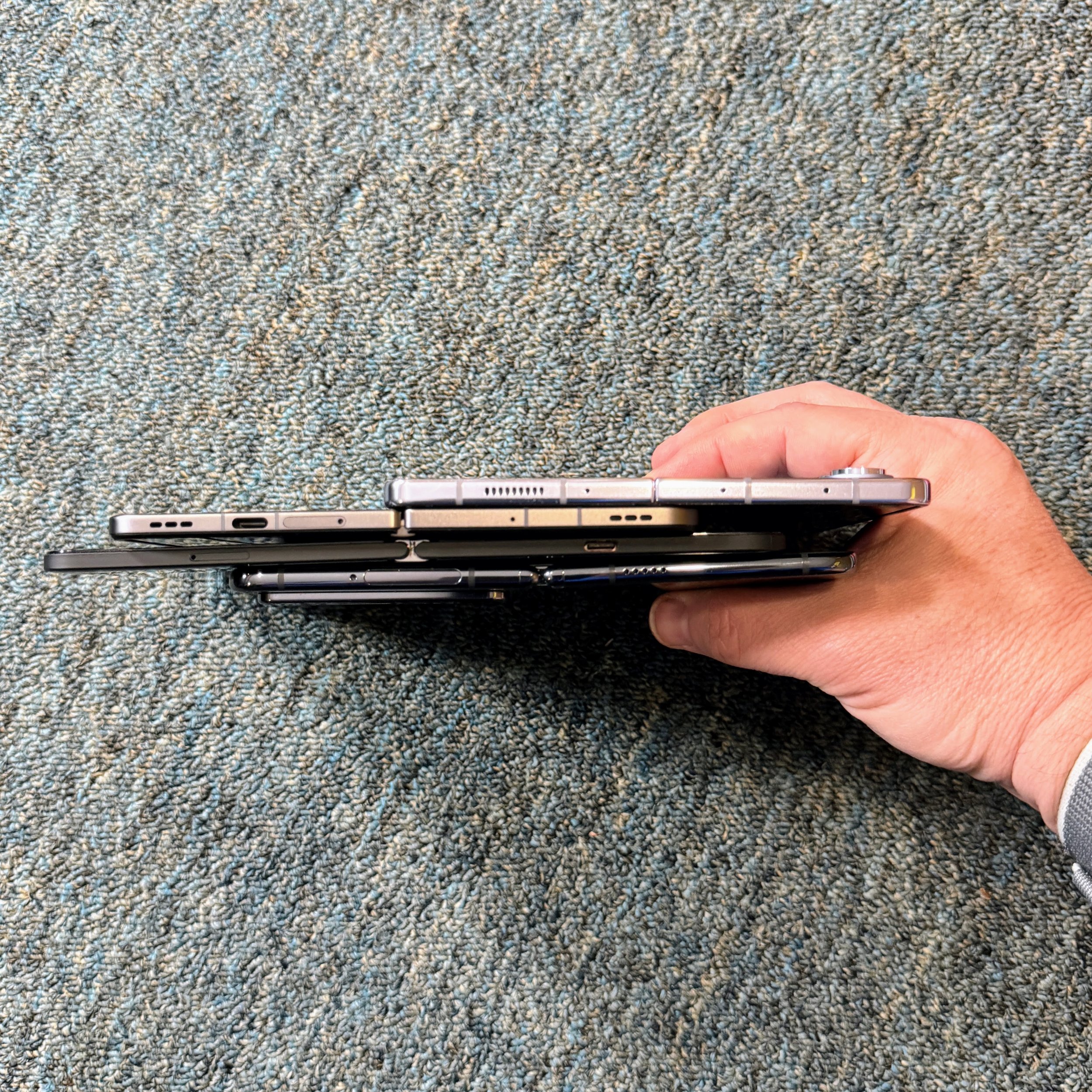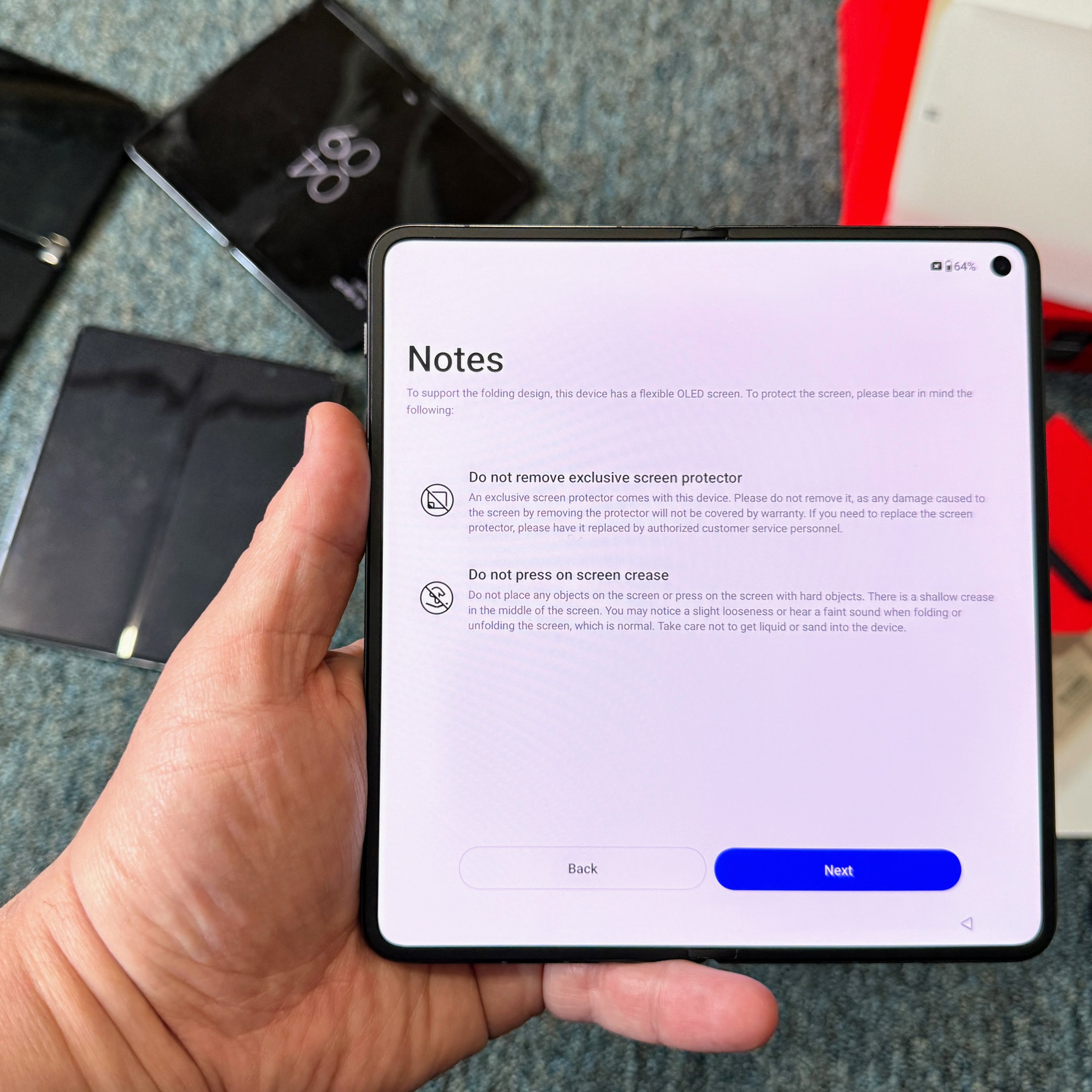OnePlus Open Brings More Competition to the Small Fold-Larger Smartphone Market
OnePlus started out as an enthusiast direct-to-consumer brand, and it has now been folded into OPPO, a BBK company. One of the key assets that OnePlus brings to BBK is its acceptance in the West, including on again-off again relationships with U.S. carriers. Accordingly, while Huawei, Xiaomi, HONOR, OPPO, and even Tecno Mobile have all released fold-larger phones, in markets like the U.S., the only options have been from Samsung and Google. (Microsoft tried a dual-screen Android phone, the Surface Duo, but the second generation released in 2021 appears to be the last.)
The OnePlus Open may be the first of its kind from the brand, but its hardware is polished and leapfrogs Google and Samsung in some aspects. Like all foldable vendors, OnePlus marketing highlights the hinge design, durability testing, and screen fold radius. It’s not clear that consumers are as excited by this as OEMs think they are, but OnePlus’ Flexion waterdrop hinge has 69 components vs 100+, and the crease is slightly less noticeable than on the Galaxy Z Fold 5. OnePlus tested the hinge extensively, but water certification is limited to IPX4; if you’re in danger of dunking your phone, Samsung’s IPX8-rated Galaxy Z Fold 5 is more likely to survive.
To get its weight and girth down, OnePlus replaced 316L stainless steel with titanium, carbon fiber, and other exotic materials like cobalt alloy. The result is impressive. At 239g, the OnePlus Open is significantly lighter than Google’s Pixel Fold. With its 64MP ½” sensor and a 6x optical zoom periscope, the Open offers greater camera flexibility than Samsung’s Galaxy Z Fold 5. (It’s technically a 3x optical zoom and a crop into the sensor, but the sensor is large enough that this isn’t just marketing. Functionally, it is a 6x optical zoom.) The camera bump is enormous, but the rest of the phone is remarkably thin; OnePlus was not unreasonably comparing it to the iPhone 15 Pro Max, which does not fold open to reveal a larger screen inside.
OnePlus phones used to be silicon-heavy but lacking on image quality, but that changed in the past couple of generations. The main camera uses a Sony pixel-stacked sensor for twice the light input, and OnePlus’ processing generally does a good job even in challenging situations, and the Hasselblad branding comes with color science that I typically find pleasing. There are definitely times when the Pixel Fold or Galaxy Fold 5 took the better picture, but the Open’s cameras – from wide to regular to telephoto – are good. They are more of a reason to buy, not avoid, this foldable.
On the silicon side, the OnePlus Open is stacked: there is only a single configuration, and it includes Qualcomm’s current flagship Snapdragon 8 Gen 2 with a full 16GB LPDDR5X RAM, 512GB storage, WiFi 7, and dual 5G/dual SIM (either physical or eSIM). There is a 4080 mAh battery with 67W fast charging 0-100 in 48 minutes – and a charger in the box.
About the only thing that the OnePlus Open obviously lacks is wireless charging, and no matter how many YouTubers and tech journalists complain bitterly about this, it is unlikely to be a deal-breaker. However, OnePlus is missing stylus support or a DeX-like PC mode; for those use cases buyers will have to go with Samsung.
The OnePlus open comes in Voyager Black with a vegan leather back or Emerald Green with a very slippery frosted glass rear panel. The black version is the safer investment from a drop-prevention perspective, but both come with a thin, grippy protective case in the box.
One of the key challenges with foldables is software. Google is slowly making progress with Android supporting larger displays, but this is still an area where Samsung’s early start and iterative improvements over five generations leads to better outcomes. OnePlus is adding its own OpenCanvas layer with OxygenOS 13.2 to let apps run on a layer above Android and launch from a side tray. It works, but Samsung’s approach is more elegant. Samsung has also done a better job getting key developers like Meta to optimize their apps for the Galaxy Z Fold 5. However, OnePlus is catching up on software support: the Open will get 4 years of OS updates and 5 years security updates.
The OnePlus Open goes on sale today for $1699 with deliveries starting October 26. It will be sold at OnePlus.com, Amazon, and Best Buy and will work on all three U.S. carriers. Fold-large phones are famously expensive. While Tecno Mobile does offer the Phantom V Fold for $1100 in India and a few other geographies, Samsung’s Galaxy Z Fold 5 leads the market in sales at $1800. Google entered the market with the Pixel Fold for …$1800. OnePlus’ grew its brand identity by offering specs-heavy phones at a discount. The OnePlus Open is definitely heavy on the specs, but at $1700, it’s not much of a discount. Above a certain price point, consumers are not as price sensitive – a $100 discount is not going to sway consumers away from more established alternatives. OnePlus might argue that its specs deserve a premium, so the price is already discounted. That’s not wrong, but Samsung offers advantages of its own including a richer hardware accessories ecosystem, more mature software, and carriers willing to finance or subsidize the purchase.
There is one final pricing wrinkle, at least in the U.S. when purchasing direct from OnePlus. The company has a trade-in program that starts at $200 for any phone in any condition. If you have an old phone in a drawer, that brings the price down to $1500. OnePlus is not running this program in other markets.
The OnePlus Open has an extremely attractive combination of device and imaging performance with utility and light weight. It is priced fairly – with or without a trade-in – but this category is still a small niche, and without carrier distribution, the OnePlus Open’s impact on the U.S. market will be limited. However, the fact that OnePlus has produced such a polished product in an emerging category should help it gain traction at carrier retail in the future. In the meantime, it serves as a brand halo product for enthusiasts to discover — or rediscover — the OnePlus brand.
For Techsponential clients, a report is just a springboard to personalized discussions and strategic advice. To discuss the implications of this report on your business, product, or investment strategies, contact Techsponential at avi@techsponential.com.


